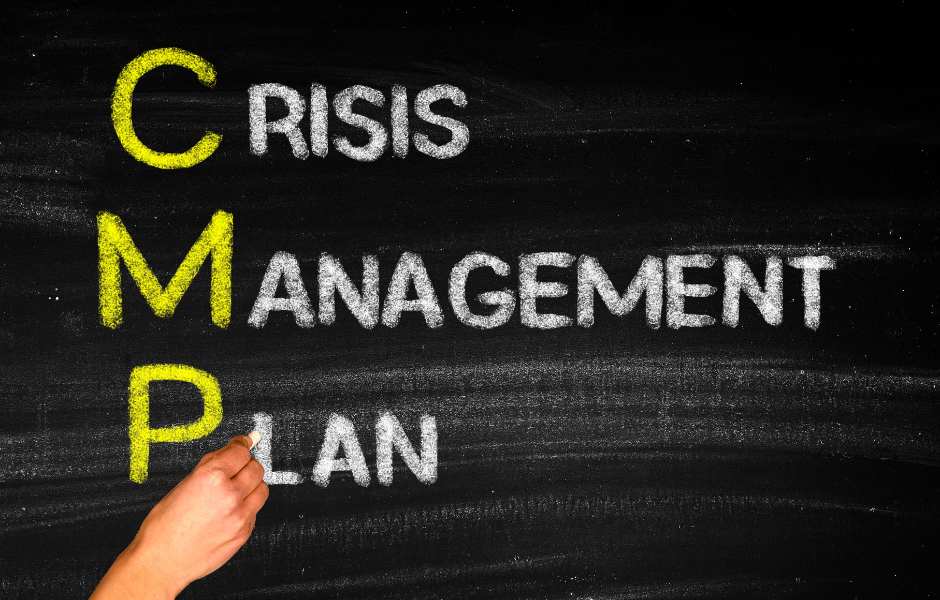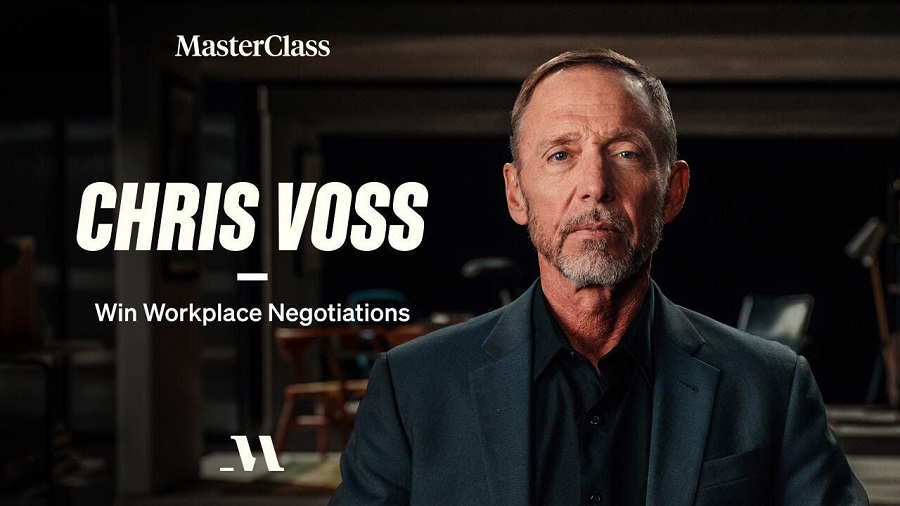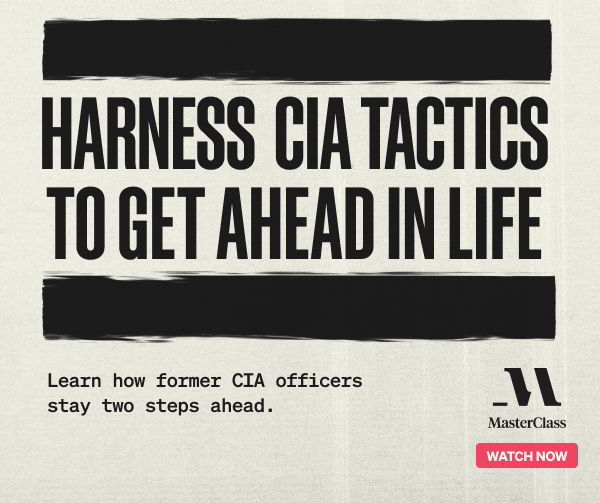
Learn high-stakes communication skills to drive business success, enhance collaboration, and foster strong relationships in challenging situations.
Effective communication is vital, especially in high-stakes situations. Whether negotiating a major deal, addressing a crisis, or delivering a significant presentation, communicating clearly and impactfully is crucial.
This article explores essential high-stakes communication skills, strategies for successful interactions, and practical tips for mastering these skills.
Contents
What is High-Stakes Communication?
High-stakes communication refers to situations where the outcome can significantly impact individuals or organizations.
These scenarios require technical knowledge and the ability to connect with others, navigate complex emotions, and adapt to changing dynamics. Success hinges on articulating thoughts clearly and persuasively while maintaining professionalism and empathy.
13 Key High-Stakes Communication Skills to Develop
To navigate the complexities of high-stakes situations, professionals must develop a core set of communication skills that enhance clarity, foster collaboration, and build trust.
#1. Clarity and conciseness
Clarity and conciseness is the ability to express thoughts clearly and succinctly, avoiding jargon and ambiguity.
Why It Matters: Clear communication reduces misunderstandings and ensures your message is received as intended.
In high-stakes situations, where decisions may be based on your words, it is essential to convey your thoughts straightforwardly to facilitate effective decision-making.
Example: Imagine a scenario where a project manager needs to present a proposal for a significant budget increase to the executive team.
Instead of using technical jargon or convoluted language, the project manager prepares a clear and concise summary, outlining the project’s goals, the rationale for the budget increase, and the anticipated return on investment (ROI).
The project manager might say:
“To enhance our team’s efficiency and meet upcoming project deadlines, I propose a budget increase of 20%. This increase will allow us to hire two additional developers and upgrade our software tools. Based on our previous project outcomes, we expect a 30% increase in productivity, resulting in an estimated ROI of 150% within the next six months.”
In this example, the project manager avoids jargon and presents the information clearly, focusing on the key points that matter to the executives.
This approach makes the proposal easier to understand and increases the likelihood of gaining approval, as decision-makers can quickly grasp the essential details and implications of the request.
How to learn:
- From Structure To Style: Master Your Copywriting
- Business Writing Courses to Write Clearly & Concisely
- How To Write a Business Proposal (Free Business Proposal Templates)
#2. Active listening
Active listening skills involve fully engaging with the speaker and showing attentiveness through verbal and nonverbal feedback.
Why It Matters: Active listening is essential for effective communication, especially in high-stakes situations. It builds trust, fosters collaboration, and ensures that you fully understand the other person’s perspective.
By showing genuine interest in what others say, you create an environment where open dialogue can thrive, leading to better outcomes and stronger relationships.
Example: Consider a situation where a team leader discusses project challenges with a team member. Instead of simply waiting for their turn to speak or interrupting with their solutions, they practice active listening.
As the team members share their concerns about tight deadlines and resource limitations, the leader nods, maintains eye contact, and uses verbal affirmations like “I see” or “That makes sense.”
They refrain from jumping in with suggestions until the team member finishes their thoughts. Afterward, the leader reflects on what was said by summarizing the key points:
“It sounds like you’re feeling overwhelmed by the current deadlines and think we might need more resources to meet our goals. Let’s discuss how we can address these challenges together.”
In this example, the team leader’s active listening validates the team member’s feelings and encourages open communication.
By reiterating the team member’s concerns, the leader demonstrates understanding and sets the stage for collaborative problem-solving, leading to more effective solutions and a more cohesive team dynamic.
How to learn:
#3. Empathy
Empathy is the capacity to understand and share the feelings of others.
Why It Matters: Demonstrating empathy is crucial in high-stakes communication as it can de-escalate conflicts, build rapport, and create a supportive environment.
When individuals feel understood and valued, they are more likely to engage openly, collaborate effectively, and contribute positively to the conversation.
Empathy fosters trust and connection, essential for successful communication, particularly in challenging situations.
Example: Imagine a scenario where a sales manager meets with a frustrated client unhappy with a recent product delivery delay. Instead of focusing solely on the logistical issues or defending the company’s position, the sales manager practices empathy by acknowledging the client’s feelings.
The manager might say:
“I understand how disappointing it must be to experience this delay, especially when you were counting on our product to meet your deadlines. I can see how this impacts your team and your goals. Let’s work together to find a solution that addresses your concerns and gets things back on track.”
In this example, the sales manager expresses empathy by recognizing the client’s frustration and validating their feelings. This approach helps to de-escalate the immediate tension and strengthens the relationship between the manager and the client.
By showing genuine concern and willingness to collaborate on a solution, the manager creates a supportive environment where the client feels heard and valued, ultimately leading to a more constructive and positive dialogue.
How to learn:
#4. Adaptability
Adaptability means adjusting your communication style based on the audience and context.
Why It Matters: In high-stakes communication, adapting your communication style is crucial for effectively connecting with different audiences and responding to varying contexts.
Recognizing that different situations may require different approaches enables you to tailor your message for maximum impact.
Being adaptable helps ensure your message resonates, fosters understanding, and promotes engagement, which is vital for successful outcomes.
Example: Consider a scenario in which a corporate executive delivers a presentation to two different groups: a board of directors and a team of recent graduates.
For the board, the executive may focus on high-level strategic objectives, financial metrics, and risk management, using industry-specific language and data-driven insights to convey authority and expertise.
The presentation might include detailed charts and graphs illustrating market trends and projected growth. In contrast, when addressing recent graduates, the executive might adopt a more relatable and informal tone, sharing personal anecdotes and career lessons while simplifying complex concepts.
The message could shift to emphasize adaptability in the workplace and the exciting opportunities ahead, using clear, accessible language without jargon.
For example, the executive might say:
“As you step into your careers, remember that the landscape is always changing. Embrace adaptability; it’s one of the most valuable skills you can develop. Whether working on a project or navigating workplace dynamics, being open to new ideas and perspectives will set you up for success.”
In this example, the executive effectively adjusts their communication style to meet the needs of each audience. By being adaptable, they ensure that their messages resonate, making complex information digestible for the graduates while maintaining professionalism and depth for the board.
This adaptability enhances engagement and fosters a more inclusive environment where all listeners feel connected to the message.
How to learn:
- Adapting: Career Development Specialization
- Professional Skills for the Workplace Specialization from the University of California, Davis
#5. Nonverbal communication
Nonverbal communication skills help you utilize body language, facial expressions, and eye contact to enhance your message.
Why It Matters: Nonverbal communication is a powerful tool that can significantly impact how your message is perceived.
Body language, facial expressions, and eye contact can reinforce or contradict your verbal message, making them crucial for effective communication.
When aligned with your spoken words, nonverbal cues help to convey sincerity, confidence, and engagement, fostering a deeper connection with your audience.
Example: Imagine a team leader delivering critical feedback to a team member during a performance review. While they need to articulate their points clearly, how they present this information nonverbally can significantly impact how the message is received.
For instance, if the team leader maintains an open posture, makes consistent eye contact, and uses a calm, friendly tone, they create an atmosphere of trust and respect. They might lean slightly forward, indicating interest and engagement while nodding to show understanding as the team member responds.
Conversely, if the leader crosses their arms, avoids eye contact, or fidgets during the conversation, the team member may perceive the feedback as overly critical or dismissive, regardless of the words being spoken.
The body language could convey a lack of interest or empathy, making the team member feel defensive or disengaged.
For example, the team leader might say:
“I appreciate your hard work on the recent project. While there are areas for improvement, I want to emphasize how valuable your contributions are to the team.”
In this example, the leader’s positive nonverbal cues — like maintaining eye contact and an open posture — enhance their verbal message, making it clear that they genuinely value the team member’s efforts.
This alignment between verbal and nonverbal communication helps the team members receive constructive feedback positively and strengthens their rapport and trust in the leader, leading to a more productive and collaborative working relationship.
How to learn:
#6. Confidence
Confidence is the skill of projecting assurance in your words and actions.
Why It Matters: Confidence is key to effective communication, especially in high-stakes situations. When you project assurance in your words and actions, you instill trust and credibility in your audience.
Confident communicators are more likely to engage listeners, encouraging them to invest in the message. This trust can significantly influence outcomes, from negotiations to presentations, and foster a positive environment for collaboration.
Example: Consider a product manager presenting a new product launch to potential investors. To effectively convey the value of the product, the manager must project confidence throughout the presentation.
As they begin, the manager stands tall, makes deliberate eye contact with the audience, and uses a clear, assertive voice to introduce the product’s features and benefits.
Instead of relying heavily on notes or reading from a script, they engage the audience by maintaining an interactive dialogue, inviting questions, and addressing concerns with poise.
For instance, the manager might say:
“We believe this product will revolutionize the market. Our research indicates a 40% increase in efficiency compared to current solutions, and I’m excited to share how we plan to achieve this together.”
In this example, the product manager’s confident demeanor enhances the impact of their message. Their assuredness — reflected in their body language and tone — reassures investors of the product’s potential, making them more likely to engage positively with the information.
When the manager handles questions easily, demonstrating thorough knowledge and preparation, it further solidifies their credibility and the audience’s trust. This confidence supports a successful pitch and lays the groundwork for strong investor relationships.
How to learn:
- Self-Confidence Trainer Course
- 10 Steps to Absolute Assertiveness
- Assertive Communication Skills Masterclass
- Complete Communication Skills Masterclass for Life
- How To Overcome Speech Anxiety & Learn The Art Of Public Speaking
#7. Persuasion
Persuasion involves influencing others’ thoughts, feelings, or actions through effective arguments.
Why It Matters: Persuasive communication is essential in high-stakes situations, such as negotiations, sales, and leadership. It enables you to rally support, drive action, and create a shared vision among diverse stakeholders.
Mastering the art of persuasion allows you to articulate your ideas compellingly and create a sense of urgency or importance around your message, ultimately leading to successful outcomes.
Example: Imagine a scenario where a nonprofit organization’s executive director seeks funding from potential donors for a new community initiative.
To effectively persuade these donors, the director must craft a compelling argument that resonates with their values and motivations.
During the presentation, the director shares compelling statistics about the community’s needs with personal stories illustrating the impact of their previous initiatives.
They might say:
“Last year, we provided over 500 meals to families, but demand has increased by 30%. With your support, we can expand our program to reach more families and provide nutritional education. Imagine the difference we can make together.”
In this example, the executive director uses a combination of logical reasoning — through statistics, emotional appeal, and personal stories — to persuade the donors.
The director fosters a sense of shared purpose and urgency by connecting the initiative to the donors’ values and framing the request as an opportunity for collaboration.
The director’s ability to persuade effectively increases the likelihood of securing the necessary funding, as the donors feel emotionally connected to the cause and confident that their contributions will lead to tangible results.
This skill drives immediate action and lays the groundwork for ongoing support and engagement with the organization.
How to learn:
#8. Conflict resolution
Conflict resolution skills help in managing and resolving disputes constructively.
Why It Matters: Disagreements and conflicts are inevitable in high-stakes situations. The ability to manage and resolve these disputes constructively is crucial for maintaining relationships, fostering collaboration, and creating a positive environment.
Effective conflict resolution skills can transform challenges into opportunities for growth, innovation, and stronger team dynamics. Resolving conflicts can lead to better understanding, improved processes, and stronger partnerships.
Example: Consider a situation where two department heads are at odds over resource allocation for an important project. Tensions are high, and both parties are entrenched in their positions.
The project manager facilitates a resolution, demonstrating effective conflict resolution skills. Instead of taking sides, the project manager arranges a meeting with both department heads to openly discuss their concerns.
During the meeting, they encourage each party to express their viewpoints and actively listen to one another. The project manager asks clarifying questions to ensure both sides feel heard:
“Can you elaborate on why you believe these resources are essential for your team’s success?”
After each party has shared their perspectives, the project manager guides the conversation toward finding common ground. They might suggest a brainstorming session to explore creative solutions that address both teams’ needs.
For example, the project manager could propose:
“What if we allocate shared resources for the first phase, allowing both teams to demonstrate their value? After that, we can reassess and adjust the allocation based on performance.”
In this example, the project manager’s conflict resolution skills help de-escalate the situation and foster collaboration.
By facilitating open dialogue and focusing on shared goals, the project manager transforms a potentially damaging conflict into a collaborative effort that strengthens relationships and improves project outcomes.
This approach resolves the immediate disagreement and cultivates a culture of teamwork and mutual respect, ultimately benefiting the organization.
How to learn:
#9. Storytelling
Storytelling is the art of conveying information through compelling narratives.
Why It Matters: Storytelling is a powerful communication skill that transcends traditional methods of conveying information. By weaving facts and data into compelling narratives, you can engage audiences emotionally, making your message more memorable and impactful.
Stories help listeners relate to your message personally, fostering connection and understanding. This emotional engagement can inspire action, build trust, and enhance retention of the information shared.
Example: Imagine a CEO presenting a new sustainability initiative to employees during an all-hands meeting. Instead of merely outlining the company’s goals and metrics for reducing waste, the CEO shares a personal story about a visit to a local community affected by pollution.
The CEO begins:
“Last summer, I had the opportunity to visit a small town where families struggled with the consequences of environmental neglect. I met a mother worried about her children’s health because the local river, once a source of life, was now contaminated. Her story touched me deeply and made me realize that our work goes beyond numbers and reports; it impacts real lives.”
As the CEO continues, they explain how the new sustainability initiative aims to improve the community’s quality of life and restore the local environment. They highlight the specific actions the company will take, connecting them back to the emotional story:
“By committing to reduce our carbon footprint and investing in clean energy, we can help ensure that future generations will not face the same struggles. Together, we can be part of a solution that changes lives.”
In this example, the CEO’s use of storytelling captivates the audience and emphasizes the human aspect. The narrative creates a sense of urgency and purpose, motivating employees to embrace the initiative with enthusiasm and commitment.
By framing the initiative within a compelling story, the CEO makes the message memorable and personally relevant, inspiring employees to take action and advocate for the company’s sustainability efforts.
How to learn:
#10. Preparation and planning
Preparation and planning help in high-stakes situations, including anticipating questions and objections.
Why It Matters: Preparation is crucial for effective communication, especially in high-stakes situations. By thoroughly preparing and planning your approach, you can anticipate potential questions and objections, allowing you to address them proactively.
This preparation boosts your confidence and enables you to communicate your message clearly and effectively. When you’re well-prepared, you’re better equipped to engage your audience and respond to challenges, making a lasting impression.
Example: Consider a scenario in which a financial analyst presents an investment proposal to the company’s board of directors.
The stakes are high, as securing approval could lead to significant growth opportunities for the organization. The analyst invests time in preparation and planning to ensure a successful presentation.
Before the meeting, the analyst thoroughly researches market trends, competitor performance, and potential risks associated with the proposal. They anticipate questions that board members might ask, such as:
- What are the projected returns on this investment?
- How does this proposal align with our strategic goals?
- What contingency plans do we have in place if market conditions change?
Armed with this knowledge, the analyst creates a clear and concise presentation addressing these questions directly. They confidently highlight key points, using visuals to illustrate data trends and projections.
When board members raise concerns, the analyst responds thoughtfully, drawing on their preparation to provide informed answers. For instance, when a board member questions the projected returns, the analyst responds:
“Based on our analysis, we anticipate a 15% return within the first year, supported by strong market demand and our competitive edge. Additionally, we have contingency strategies in place, such as diversifying our portfolio, to mitigate potential risks.”
By demonstrating thorough preparation, the analyst instills confidence in their proposal and reinforces their credibility. Their ability to navigate questions and objections seamlessly helps build trust with the board, increasing the likelihood of securing approval for the investment.
In this way, preparation and planning are vital in ensuring effective communication and achieving desired outcomes in high-stakes situations.
#11. Feedback reception
Feedback reception is the ability to accept and act on feedback constructively.
Why It Matters: Being open to feedback is essential for personal and professional growth, particularly in high-stakes communication scenarios.
Accepting and acting on feedback constructively enhances communication skills and helps you adapt to your audience’s needs and expectations.
This skill fosters a culture of continuous improvement and collaboration, enabling you to refine your approach and better connect with others.
Example: Imagine a team leader delivering a presentation on a new project initiative to their team. After the presentation, they seek feedback from their team members to gauge their understanding and gather suggestions for improvement.
One team member expressed that while the overall message was clear, some technical details were too complex and could be simplified for better comprehension. Instead of becoming defensive, the team leader takes this feedback as an opportunity for growth. They respond positively, saying:
“Thank you for your insight! I appreciate your honesty. Can you share which specific parts were confusing? I want to ensure everyone fully understands the project.”
The team leader then invites additional feedback from others, creating an open dialogue where team members feel comfortable sharing their thoughts. They take notes and actively listen, demonstrating their commitment to improvement.
After reflecting on the feedback received, the team leader revises their presentation materials to include simpler explanations of the technical aspects and incorporates more visuals to aid understanding.
In the next team meeting, they present the updated materials, stating:
“Based on our previous discussion, I’ve made some adjustments to simplify the technical details. I hope this makes the information more accessible and encourages more questions from everyone.”
By embracing feedback and taking actionable steps to improve, the team leader enhances their communication skills and fosters a supportive environment. Team members feel valued and heard, which builds trust and encourages collaboration.
This feedback reception and adaptation cycle ultimately leads to more effective communication and a stronger, more cohesive team dynamic.
#12. Crisis communication
Crisis communication involves communicating effectively during emergencies or crises.
Why It Matters: Effective crisis communication is vital in managing emergencies and unexpected situations. Clear and calm communication can significantly influence how stakeholders perceive and react to the crisis.
By providing timely, accurate information, you can help mitigate panic, maintain trust, and ensure all parties know the necessary steps to address the issue.
Mastering crisis communication aids in managing the immediate situation and contributes to the organization’s long-term reputation and stakeholder relationships.
Example: Consider a technology company that experiences a major data breach, compromising sensitive customer information. As news spreads, the company’s leadership team understands the importance of effective crisis communication to maintain customer trust and transparency.
The CEO quickly assembles a crisis management team to develop a communication strategy. They decided to issue a public statement addressing the breach and outlining the steps the company is taking to resolve the issue.
The CEO begins the statement with a clear acknowledgment of the situation:
“We have recently identified a data breach that may have affected some of our customers’ personal information. We take this matter very seriously and are committed to ensuring the safety and security of your data.”
The statement details the breach, the company’s response, and how customers can protect themselves. The CEO emphasizes transparency and reassurance, stating:
“We have engaged cybersecurity experts to investigate the breach and implement additional security measures. We encourage our customers to monitor their accounts and report any suspicious activity. Additionally, we will provide regular updates as we learn more about the situation.”
By communicating clearly and calmly, the CEO helps to manage the crisis effectively. This proactive approach addresses customers’ immediate concerns and demonstrates the company’s commitment to transparency and accountability.
In the days that follow, the company maintains open lines of communication, providing regular updates through various channels, including social media and email newsletters. This ongoing communication reinforces stakeholder trust and shows that the company takes the matter seriously.
By mastering crisis communication skills, the company navigates the immediate challenge, lays the groundwork for rebuilding trust, and demonstrates its dedication to customer safety and security in the long run.
How to learn:
#13. Negotiation skills
Negotiation skills involve reaching mutually beneficial agreements through discussion and compromise.
Why It Matters: Effective negotiation skills are essential in high-stakes scenarios where the outcomes can significantly influence business relationships and financial success.
The ability to negotiate well helps parties find common ground, foster collaboration, and achieve results that benefit all stakeholders involved. Strong negotiation skills lead to favorable agreements and help build long-lasting relationships based on trust and respect.
Example: Imagine a scenario where a project manager is negotiating a contract with a vendor for critical supplies needed for an upcoming project.
Both parties have specific goals and constraints, making it essential for the project manager to use their negotiation skills effectively. Before entering the negotiation, the project manager prepares by researching the vendor’s market position, understanding their needs, and identifying potential areas for compromise.
They outline their objectives, such as pricing, delivery timelines, and quality standards, while considering the vendor’s perspective. During the negotiation meeting, the project manager opens the conversation by establishing rapport and acknowledging the vendor’s value:
“We appreciate the quality of your products and the timely service you’ve provided in the past. I’d like to explore how we can work together to create a mutually beneficial agreement for this project.”
As the discussion unfolds, the project manager actively listens to the vendor’s concerns and priorities, demonstrating empathy and respect. When the vendor proposes a higher price due to increased costs, the project manager responds thoughtfully:
“I understand that rising costs are a challenge for you. How about we explore a volume discount that could help us both? If we increase our order quantity, can we find a way to adjust the pricing?”
This approach encourages a collaborative atmosphere and opens the door to creative solutions. By focusing on finding common ground, the project manager and vendor can discuss alternative options, such as flexible payment terms or phased deliveries, that align with both parties’ needs.
Through effective negotiation, the project manager successfully reaches an agreement that satisfies both the company’s budget constraints and the vendor’s pricing requirements.
This outcome secures the necessary supplies for the project and strengthens the working relationship between the two parties. The successful negotiation reflects a commitment to collaboration and lays the foundation for future partnerships.
In this way, negotiation skills are pivotal in high-stakes situations, facilitating beneficial outcomes for all involved and fostering relationships built on mutual respect and understanding.
How to learn:
- Learn the Art of Negotiation with FBI Hostage Negotiator, Chris Voss
- How To Learn Powerful Negotiation Skills in the Workplace
6 Strategies for Effective High-Stakes Communication
To enhance your high-stakes communication skills, consider implementing these strategies that can significantly improve your effectiveness in critical conversations and interactions.
#1. Preparation is key
- Research Your Audience: Understand audience perspectives, interests, and potential objections to tailor your message accordingly.
- Clarify Your Objectives: Define clear goals for the communication to guide your messaging effectively.
- Develop Your Message: Structure your communication logically using the “What, So What, Now What” framework to convey your points effectively.
#2. Master nonverbal communication
- Body Language: Maintain open and confident body posture, and avoid closed gestures.
- Eye Contact: Establish eye contact to show engagement and build trust.
- Facial Expressions: Use expressions that align with your message to reinforce your communication.
#3. Handle emotions with care
- Stay Calm: Maintain composure during challenging situations by taking deep breaths and pausing to collect your thoughts.
- Empathize: Acknowledge the emotions of others to validate their feelings.
- Keep It Professional: Focus on the issue at hand rather than personal attacks.
#4. Adapt your style to the situation
- In Negotiations: Be assertive yet collaborative for a win-win outcome. Use active listening to understand the other party’s needs and positions.
- In Crisis Management: Communicate transparently and promptly to keep stakeholders informed.
- In Presentations: Adapt your tone and style to suit the audience while using storytelling techniques to engage them.
#5. Practice and seek feedback
- Role-Playing: Engage in mock negotiations or presentations to simulate high-stakes situations.
- Record and Review: Analyze your speeches or presentations to identify areas for improvement.
- Solicit Feedback: Seek constructive feedback from trusted peers to refine your communication style.
#6. Learn negotiation techniques
- Identify Interests: Focus on understanding the underlying interests of all parties rather than just their positions.
- Build Rapport: Establish a positive relationship with the other party to facilitate open communication and trust.
- Explore Options: Be creative in finding solutions that satisfy the needs of all parties involved.
- Use Clear Language: Avoid ambiguity in business proposals and agreements to prevent misunderstandings.
High-Stakes Communication Course with Former CIA Officers
Mastering high-stakes communication, including negotiation skills, is essential for professionals seeking to navigate critical situations effectively. MasterClass now offers access to three top former CIA officers authorized to share real-life lessons on leadership, critical thinking, and risk management.
Learn high-stakes skills from trusted experts: Brian Carbaugh (The Man Under Cover), Michael Morell (The Analyst and Informant), and Dawn Meyerriecks (The Real-Life ‘Q’).
Find out how these CIA veterans read people and use empathy and active listening to inspire loyalty, close deals, and make better decisions. Hone your persuasion skills with tips on reframing arguments for maximum impact.
Discover classified techniques to assess risk, improve relationships, and get ahead in work and life by understanding your audience and mitigating bias. This two-part series, The Art of Intelligence, equips you with the tools to build trust, sharpen critical thinking, and take calculated risks for success.
Watch the high-stakes communication course now
You can enhance your effectiveness in high-pressure scenarios by developing key skills such as clarity, empathy, adaptability, active listening, and implementing strategies for preparation and engagement.
Strong communication will boost your performance and contribute to organizational success. Embrace the challenge and hone these high-stakes communication skills to achieve meaningful outcomes in your business endeavors.
© 2024, Priya Florence Shah. All rights reserved.
Priya Florence Shah is a bestselling author and an award-winning blogger. Check out her book on emotional self-care for women. Priya writes short stories and poetry and chills with her two-legged and four-legged kids in her spare time.
Discover more from Business & Branding Tips
Subscribe to get the latest posts sent to your email.


















